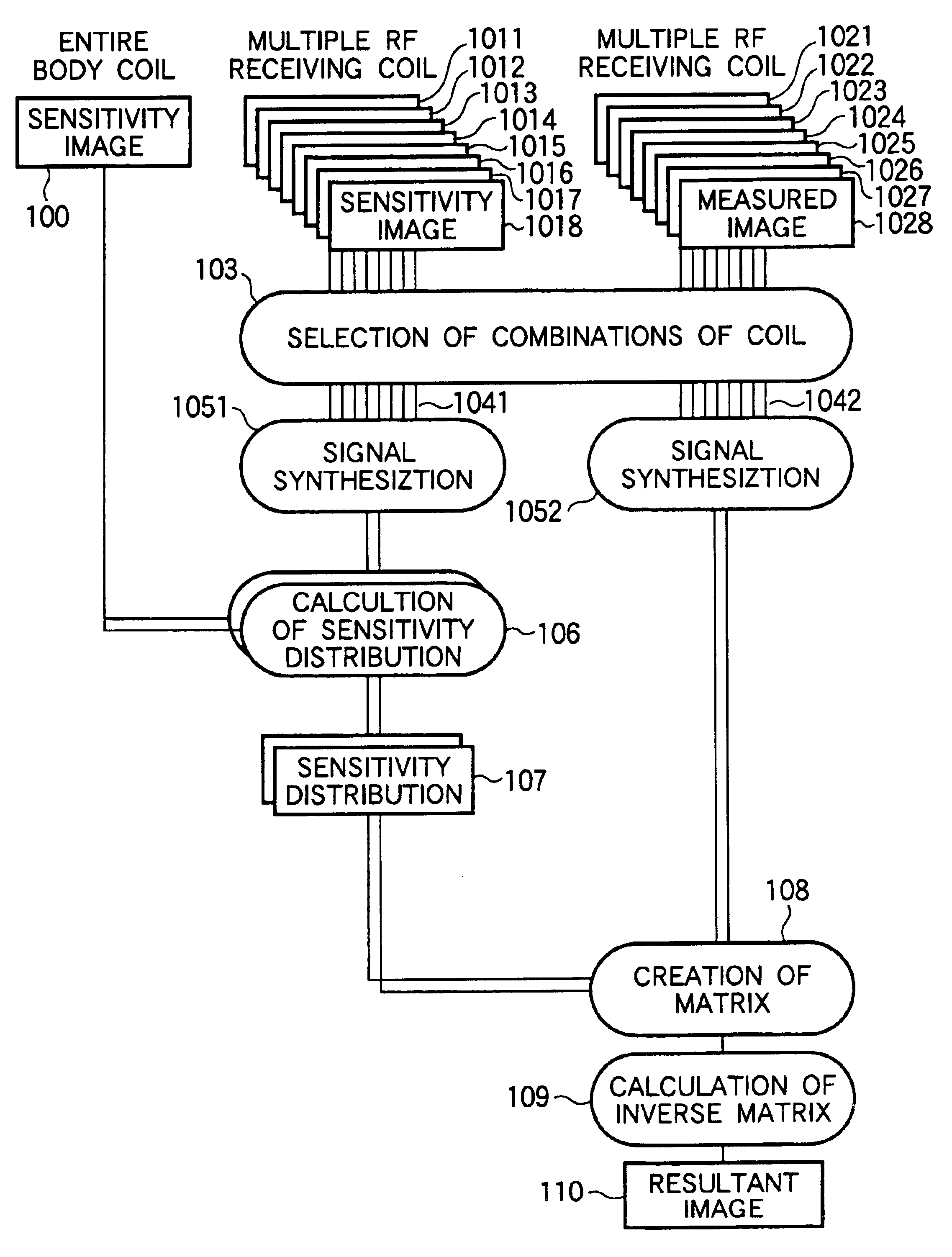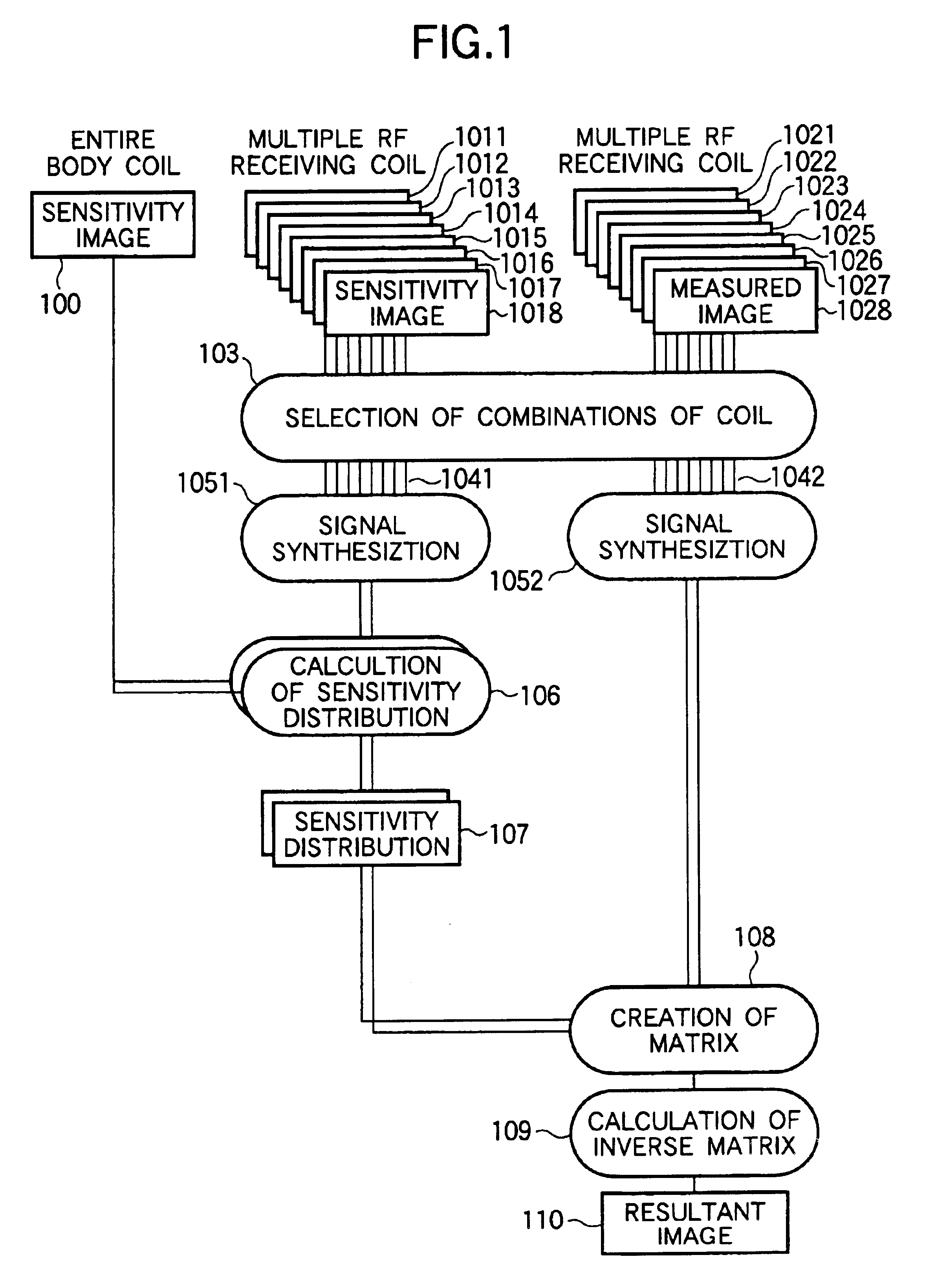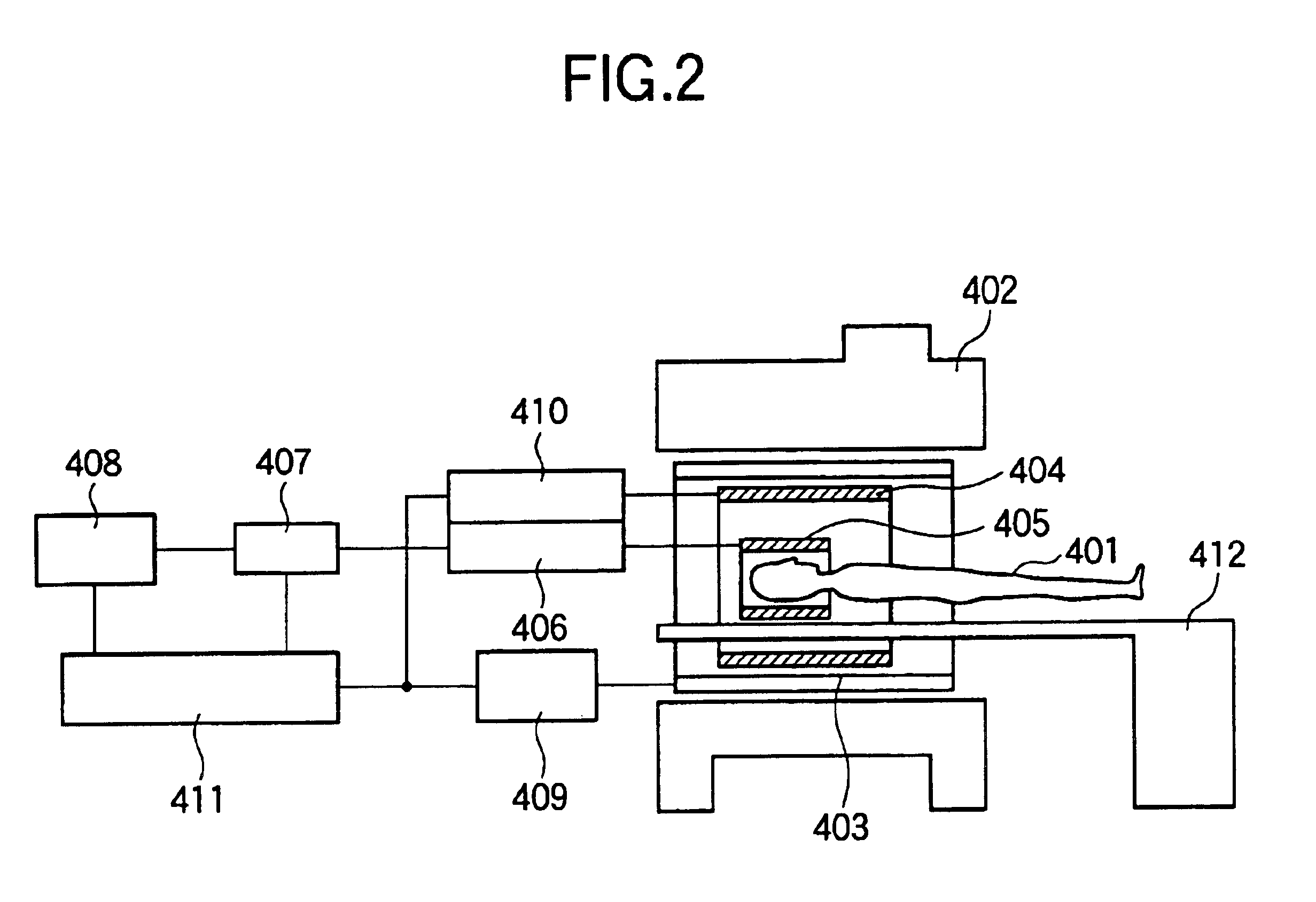Magnetic resonance imaging apparatus and method
a magnetic resonance imaging and apparatus technology, applied in the field of nuclear magnetic resonance imaging, can solve the problems of reducing image contrast or distorting images image may not be properly unfolded, etc., to reduce image artifacts, eliminate aliasing portions of images, and reduce image occurrence.
- Summary
- Abstract
- Description
- Claims
- Application Information
AI Technical Summary
Benefits of technology
Problems solved by technology
Method used
Image
Examples
first embodiment
(First Embodiment)
A first embodiment of the present invention will be explained with reference to FIGS. 1 to 10. As shown in FIG. 2, a typical MRI apparatus includes a magnet 402 for generating a static magnetic field in the space of a periphery including a patient 401, a gradient magnetic field coil 403 for generating gradient magnetic fields in the space, an RF transmission coil 404 for generating a radio-frequency magnetic field in the region, and an RF probe 405 for detecting the NMR signals generated by the patient 401. Although the figure shows an MRI apparatus having a vertical magnetic field in which a static magnetic field is generated in a vertical direction, a MRI apparatus having a horizontal magnetic field in which the static magnetic field is generated in the body axis direction of the patient 401 may be employed.
The gradient magnetic field coil 403 is composed of a plurality of coils for generating the gradient magnetic fields in X-, Y- and Z-directions and generate t...
second embodiment
(Second Embodiment)
Next, a second embodiment of the present invention will be described with respect to FIGS. 11 to 13. In the second embodiment, an example that four RF receiving coils are used as the multiple RF receiving coil different from the example shown in FIG. 3 will be explained. Accordingly, the second embodiment is arranged similarly to that of the first embodiment except that the receiving unit of the measured signals shown in FIG. 4 is arranged to have four channels. Further, since an MRI apparatus is the same as that of the first embodiment shown in FIG. 2 and a pulse sequence is the same as that of the first embodiment shown in FIG. 5, explanation of them is omitted.
An object to be measured, which is generally employed in MRI apparatuses at present, is protons that are a material mainly constituting a patient. The morphology or function of the head, belly, four limbs, and the like of a human body is two-dimensionally or three-dimensionally imaged by transforming the ...
third embodiment
(Third Embodiment)
FIG. 13 shows a modification of the second embodiment. This embodiment shows a case that the sensitivity image of an entire body coil necessary to calculate the sensitivity distributions of respective RF receiving coils cannot be obtained. In this case, a pseudo image is created by signal coupling processing executed at step 801 in place of the sensitivity image of the entire body coil. In the signal coupling processing executed at step 801, images wi(x, y) are obtained by filtering, for example, the sensitivity images si(x, y) obtained by the respective RF receiving coils with a low-pass filter. Thus, it is possible to determine pseudo body coil images s′c (x, y) after they have been synthesized can be obtained by Expression (13). sc′(x,y)=∑i-1N si(x,y)·wi*(x,y)∑i-1N wi(x,y)2(13)
where, * represents a complex conjugate, and | | represents an absolute value.
Incidentally, the RF receiving coils constituting a multiple RF receiving coil have a sensitive region ...
PUM
 Login to View More
Login to View More Abstract
Description
Claims
Application Information
 Login to View More
Login to View More - R&D
- Intellectual Property
- Life Sciences
- Materials
- Tech Scout
- Unparalleled Data Quality
- Higher Quality Content
- 60% Fewer Hallucinations
Browse by: Latest US Patents, China's latest patents, Technical Efficacy Thesaurus, Application Domain, Technology Topic, Popular Technical Reports.
© 2025 PatSnap. All rights reserved.Legal|Privacy policy|Modern Slavery Act Transparency Statement|Sitemap|About US| Contact US: help@patsnap.com



